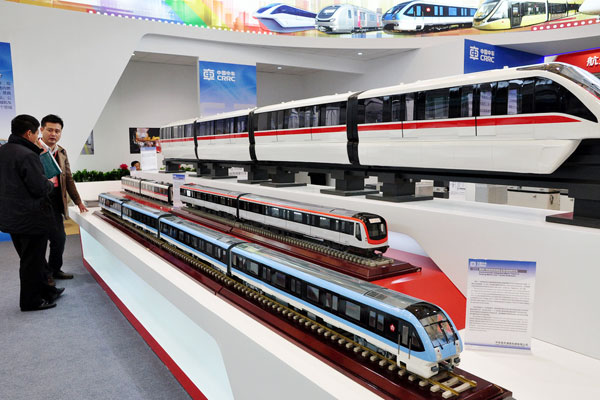
Technology levels are hampering the rapid development of China’s transportation sector, experts indicated during a high-profile seminar on Dec 20.
“Service incompetence, high logistics costs, slow innovation, high death rates, high energy consumption and weak international influence are bottlenecking the sector,said Weng Mengyong, chairman of China Highway and Transport Society.
All these could be attributed to the shortage in core technologies, amid a time when the transportation sector is witnessing an unparalleled growth momentum, he said.
China’s expressways are expected to lengthen from 130,000 kilometers in 2016 to 150,000 km by 2020, he said.
Other figures also speak to this truth, including how the high-speed railway network covered 22,000 km by 2016, the longest of its kind in the world.
China now has 800,000 bridges with a combined length of 49,100 km, a number among the most in the world.
However, Weng said, the country should be keenly aware of the technologies to tackle challenges in logistics.
Currently the country’s logistics costs account for 15.7 percent among all the costs in transportation, just 1 percentage point higher than the United States, but the costs gap could be equivalent to over billions of yuan.
Only technological advancements could help slash costs in the sector, he said.
Echoing Weng, Zhou Shengxue, vice-president of the logistics company Transfar, said the company has beefed up hefty investments in GPS tracing, course monitoring, internet of things traceability and big data on the market, aiming to ambitiously reduce costs up to 40 million yuan ($6.13 million) per year.
The firm has launched a major logistics upgrading project in mountainous Southwest China’s Guizhou province, while an internet payment and endorsement system is in place to address common payment delays in the logistics sector.
Yang Kuo, general manager of the autonomous driving department at China’s online retail giant JD, indicated that the company has begun to use drones to tackle rising logistics challenges in Northwest China’s Shaanxi province and Suqian in eastern China’s Jiangsu province.
The drones will fly up to 100 airports in Shaanxi and Sichuan provinces in the next few years, he said.
In another development, Weng indicated China is feeling the pinch in the emerging autonomous driving sector because major technologies still lag behind other countries.
He noted transportation companies should devote more efforts toward quenching the thirst for intelligent, internet-connected and clean technologies.


